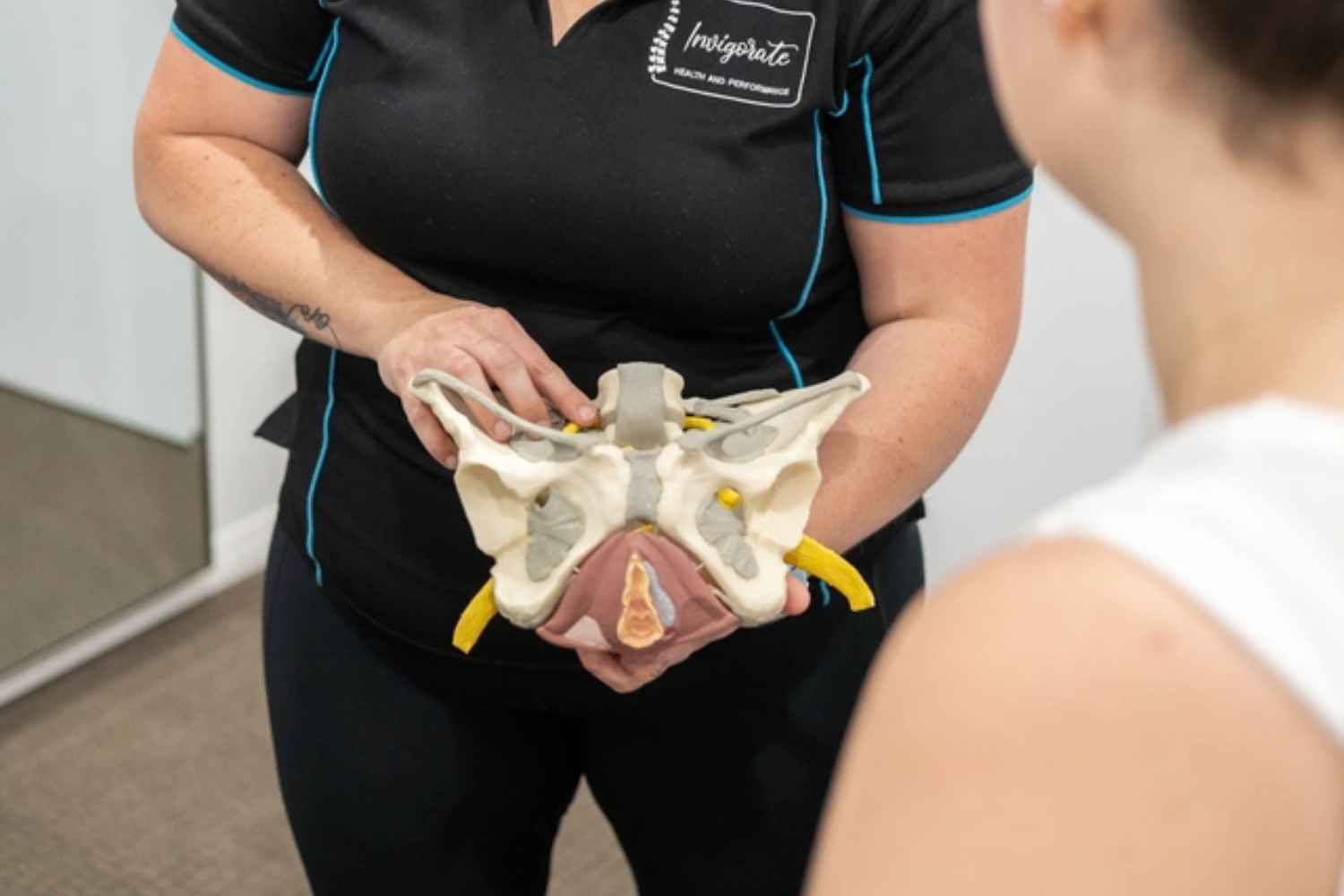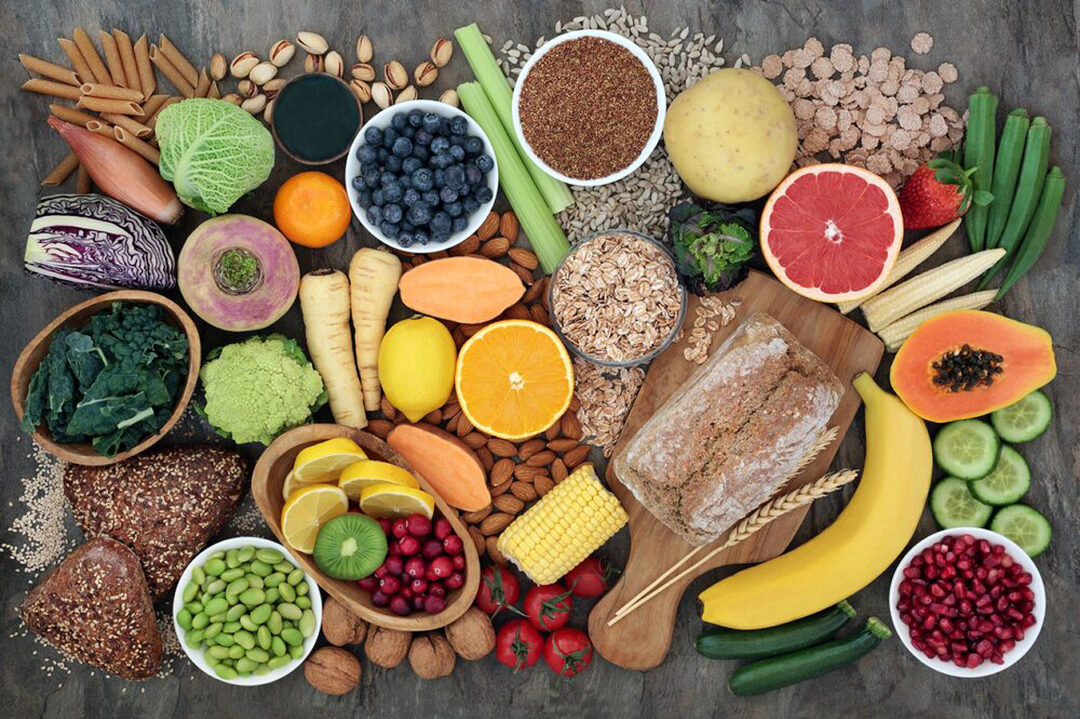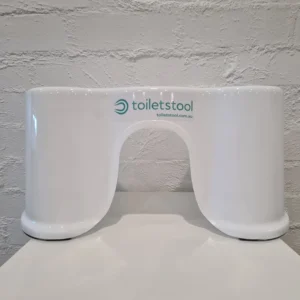
Your pelvic floor muscles work in close relationship to your pelvic organs, your uterus (in women) and your bladder and bowel, in everyone. For optimal pelvic health, and to fix or prevent issues like leaking, prolapse and pelvic pain, these organs and muscles need to be working well together.
Read on to discover what you can do to have healthy bowels, and why this will improve your pelvic health.
Ideally aim to open your bowels every day or second day and for stools that are formed but not hard.
If you’re even mildly dehydrated, your body absorbs more water as food passes through your digestive tract, resulting in harder, drier stools.
Most people do best with 1.5-2L of fluids per day, but this can vary depending on your activity levels and the climate you’re in.
Fruit and vegetables, whole grains, nuts and seeds are all great sources of dietary fibre. Kiwi fruit, pears, prunes and plums are particularly helpful foods for constipation.
You need several servings per day of these fibre-rich foods. Try adding an extra vegetable at dinner time, a salad with lunch, fruit and nuts for snacks, and choose multigrain over processed white flour bread and cracker products.
If you haven’t been eating much fibre, increase slowly, adding just a couple of extra servings per day, and stay at that level for a week or so before adding more. This allows your bowels to adjust.

If your stools are not well formed, or runny, limiting your fibre and choosing some foods that help to bulk up the stools may work better for you. White bread and pasta, bananas, peeled apples, white rice, potatoes and cheese are some examples. (NOTE: these are foods you would limit if trying to avoid constipation)
Regular daily movement, even a 10–15 minute walk, stimulates movement of your digestive tract, leading to more efficient digestion and softer, more regular bowel movements.
It’s all about Timing, Positioning and Mooing!
When you feel the first urge to empty your bowels, try not to delay.
We don’t have full voluntary control over when our bodies are ready to poo, and if you delay, you can miss the window, and not be able to go later. Next time the call of nature comes, the poo will be harder as more water has been absorbed while it sat in the bowel.
Having a regular rhythm, such as always going in the morning after breakfast and a hot drink, and allowing relaxed time for the toilet can also help.
For easy bowel motions, sit on the toilet seat, never hover as your pelvic floor muscles can’t relax.
You can also try having your feet raised slightly on a stool. Toilet stools are perfect for this as they are wider than a regular footstool and allow the hips to be open at a relaxed angle.
Lean forward a little from your hips, and rest your hands or elbows on your thighs to support your trunk.

You may have heard of this technique. It’s a clever way to stop straining and support your body to pass bowel motions with ease.
Sit, as described above, then make the ‘Mmmm’ sound. This builds a little tension in your stomach muscles, but stops you from straining. Then make the ‘Oooo’ sound, this helps the pelvic floor muscles to relax so the poo can pass easily.
You may need to ‘M-ooo’ a couple of times. This works best when your stools are formed but soft, so use the fibre tips above as well.
If these approaches aren’t enough to keep you regular, a fibre supplement such as psyllium, or guar gum (food based), or an off the shelf products such as Movicol may be needed, use according to directions.
A quick note about Medication: many medications can have the side effect of causing constipation. Check with your GP if you feel your medication could be affecting your bowels.
Pelvic Floor Muscles: This information is a great foundation for healthy bowel habits, and I also need to mention that issues with pelvic floor muscles, such as muscles that are too tight, or that contract at the wrong time, are also common causes of bowel issues. This is something a Pelvic Health Physiotherapist can help you with.
Our Pelvic Health Physiotherapists can assist you with assessment, advice and treatment to optimise bowel and overall pelvic health. Please reach out if we can support you.
I hope you enjoy implementing this information and that you find great benefits, get in touch and let us know how you went!
(Published Jul 16, 2025)
Written By: Martina Duel (Senior Physiotherapist)